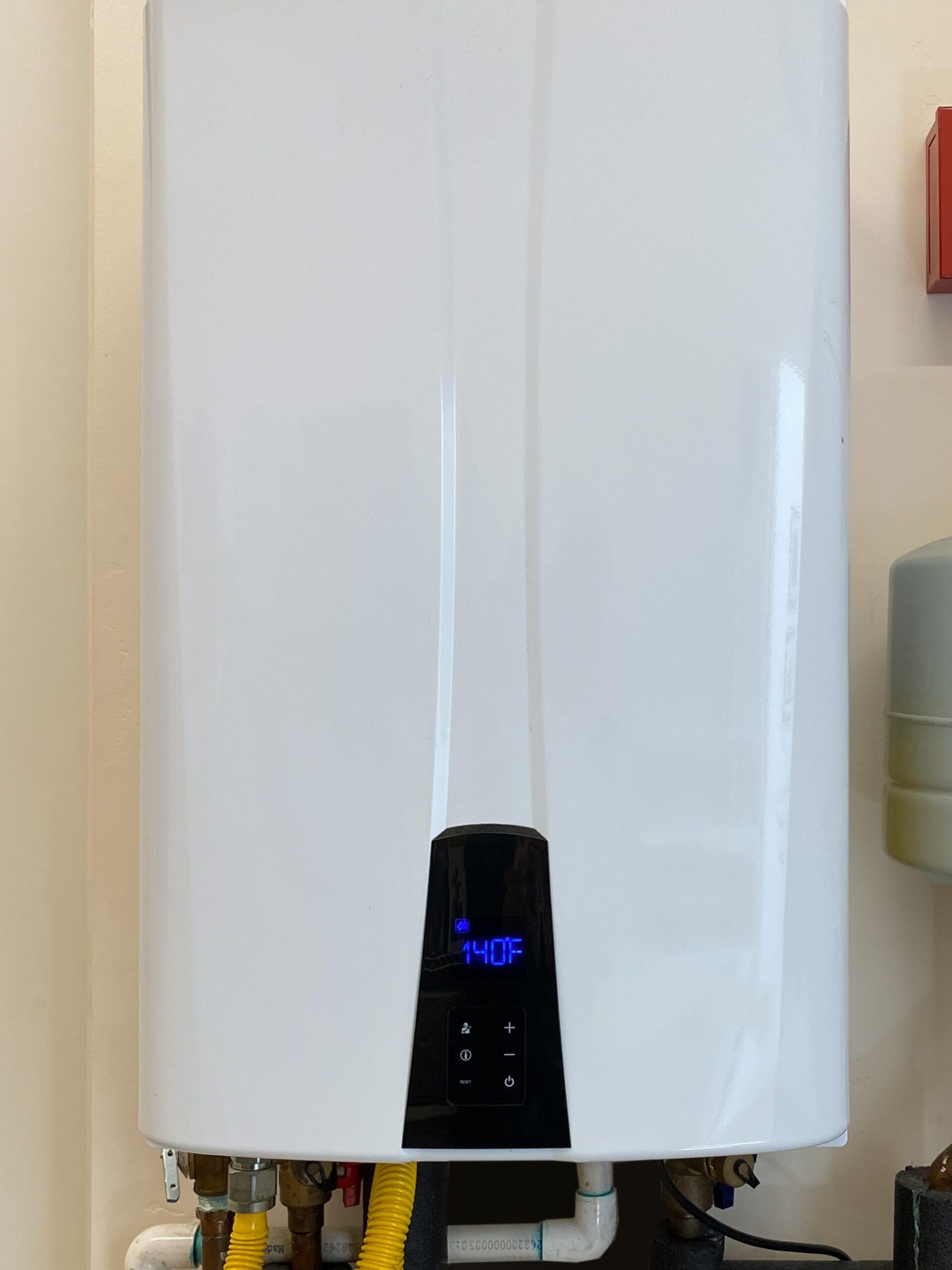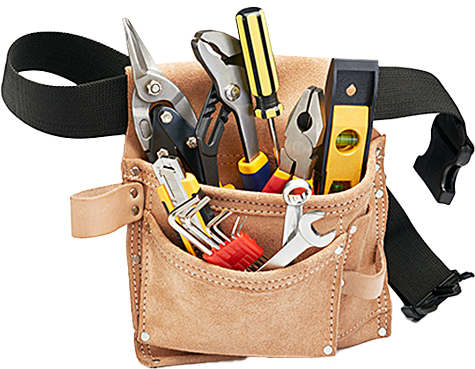Deciding between tankless water heaters and traditional water tanks is more than a matter of preference, it’s a choice that affects your home’s comfort, energy consumption, and budget. In Dallas, TX, where the climate can swing from scorching summers to chilly winters, having reliable hot water is essential. Traditional water tanks have been the go-to for many years, offering a straightforward solution to meet household needs. Yet, as technology advances, homeowners in Carrollton, TX, and beyond are starting to weigh their options more carefully.
Tankless water heaters, known for their efficiency and space-saving design, present a modern alternative to traditional water tanks. These units heat water on demand, which can lead to significant savings on energy bills over time. However, the initial investment and installation complexity can deter some. Meanwhile, traditional water tanks continue to offer a familiar ease of use and simplicity in installation, making them a viable option for many Richardson, TX, residents.
The longevity and maintenance requirements of these systems also play a crucial role in the decision-making process. Traditional water tanks typically have a lifespan of 10 to 15 years, with regular maintenance needed to prevent leaks and rust. On the other hand, tankless models can last up to 20 years or more, appealing to those looking for a long-term solution.
Ultimately, the choice between tankless water heaters and traditional water tanks depends on individual needs, preferences, and budget considerations. Each system has its pros and cons, including efficiency, lifespan, and space-saving benefits. By understanding these differences, homeowners in Dallas, TX, and surrounding areas can make an informed decision that ensures their comfort and satisfaction.
Understanding Traditional Water Tanks
Traditional water tanks have stood the test of time, offering a reliable source of hot water for homes in Carrollton, TX, and beyond. These units store a large volume of water, keeping it heated and ready for use at any moment. This means families can enjoy hot showers, clean dishes, and laundered clothes without waiting for water to heat up. Their straightforward design and operation make them a familiar choice for many homeowners.
One of the key advantages of traditional water tanks is their cost-effectiveness in terms of initial installation. Compared to tankless models, they come with a lower upfront price, making them accessible to a wider range of budgets. This aspect is particularly appealing to residents in Richardson, TX, looking for an economical solution to their hot water needs. Additionally, the simplicity of their technology means repairs and maintenance can often be performed without the need for specialized technicians.
However, it’s important to consider the energy efficiency of traditional water tanks. These units continuously heat and reheat water to maintain a set temperature, which can lead to higher energy usage and costs. Over time, this inefficiency can offset the initial savings on installation, especially in areas with extreme weather conditions like Dallas, TX. Households aiming to reduce their environmental footprint might find this aspect worth considering.
Despite their larger size and the space they occupy, traditional water tanks offer a straightforward solution for hot water supply. They can be especially suitable for homes with high water usage or limited access to natural gas, which is required for most tankless models. Understanding the balance between convenience, cost, and efficiency is crucial for homeowners deciding between traditional water tanks and modern alternatives. This knowledge ensures that each household in Dallas, TX, can choose the best system to meet their specific needs.

The Basics of Tankless Water Heaters
Shifting focus to tankless water heaters, it’s essential to highlight how they differ fundamentally from traditional water tanks. Unlike their conventional counterparts, tankless units heat water directly without the need for storage. This means that water is heated as it flows through the device, providing hot water on demand. This method can significantly reduce energy consumption, as it eliminates the need to constantly heat a large volume of water.
Tankless water heaters offer a more compact solution, ideal for homes with limited space. Their sleek design allows for installation in smaller areas, freeing up valuable space in your home. This is a stark contrast to traditional water tanks, which often require a significant amount of room. Residents in Carrollton, TX, who prioritize space-saving may find tankless heaters to be a perfect fit.
However, the initial setup for a tankless water heater can be more complex and costly than installing a traditional water tank. The upfront investment includes not just the unit but potentially upgrading your home’s electrical or gas systems to accommodate the new technology. This aspect is particularly relevant for homeowners in Richardson, TX, who are considering the switch but need to evaluate their current home infrastructure.
Despite the higher initial costs, the long-term savings on energy bills can make tankless water heaters an attractive option. They are known for their efficiency and longevity, often outlasting traditional water tanks by several years. This makes them an appealing choice for those looking to invest in their home’s future energy use and comfort. Understanding these key differences helps Dallas, TX, residents make informed decisions about their hot water needs.
Comparing Energy Efficiency and Costs
When comparing traditional water tanks and tankless water heaters, energy efficiency stands out as a significant factor. Traditional water tanks in Carrollton, TX, keep water heated at a constant temperature, which can lead to unnecessary energy use, especially during times of low demand. This constant cycle of heating and reheating water makes them less energy-efficient compared to their tankless counterparts. However, the familiarity and ease of use they offer continue to make them a popular choice among homeowners.
On the cost front, traditional water tanks initially appear more budget-friendly due to their lower installation prices. This affordability makes them an attractive option for Richardson, TX, residents looking to minimize upfront expenses. Yet, the long-term energy costs associated with maintaining a constant supply of hot water can add up, potentially outweighing the initial savings. Homeowners must consider both the immediate and future financial implications of their choice.
Furthermore, the efficiency of traditional water tanks can be influenced by insulation and maintenance practices. Properly insulating a tank and regularly checking for leaks or inefficiencies can help mitigate some of the energy losses. Such measures can make traditional water tanks a more viable option for those concerned about energy use but not ready to invest in tankless technology.
Ultimately, the decision between traditional water tanks and tankless water heaters involves weighing immediate costs against long-term savings and efficiency. While traditional tanks offer a lower entry price, the ongoing energy expenses can make them more costly over time. Homeowners must carefully assess their household’s hot water needs, budget constraints, and energy consumption habits to make an informed decision that aligns with their preferences and lifestyle.
Lifespan and Maintenance: What to Expect
Understanding the lifespan and maintenance requirements of traditional water tanks is crucial for homeowners in Carrollton, TX. These tanks typically serve households for 10 to 15 years, depending on the quality of water and the maintenance routine followed. Regular inspections can help identify potential issues like leaks or rust before they become major problems. This proactive approach ensures the longevity of the system and prevents unexpected disruptions in hot water supply.
In Richardson, TX, the maintenance of traditional water tanks is relatively straightforward, allowing many homeowners to manage basic upkeep themselves. Tasks such as flushing the tank to remove sediment build-up and checking the pressure relief valve are essential. These actions can significantly extend the tank’s life and improve its efficiency. However, professional assistance may be required for more complex issues, ensuring the system remains in optimal condition.
The overall efficiency and performance of traditional water tanks can also be enhanced with regular maintenance. Insulating the tank and pipes helps retain heat, reducing the energy needed to maintain water temperature. Such measures not only prolong the system’s lifespan but also contribute to lower energy bills. It’s a practical step for homeowners looking to maximize the benefits of their traditional water tanks without transitioning to tankless models.
Deciding between traditional water tanks and tankless systems involves considering the long-term commitment to maintenance and potential replacement costs. While traditional tanks may require more frequent attention over their lifespan, their simplicity and cost-effectiveness continue to make them a viable choice for many. Homeowners must weigh these factors against their household’s needs and preferences, ensuring a decision that aligns with their lifestyle and budget.
Space Considerations for Your Home
When considering the installation of traditional water tanks in your home, space is a significant factor to consider. These tanks require a dedicated area for placement, which can be a challenge in homes with limited space. In Carrollton, TX, where homes vary in size, this could mean sacrificing valuable storage or living space. Homeowners must evaluate their available space to ensure they can accommodate these tanks without compromising on comfort or functionality.
In contrast, residents in Richardson, TX, might find traditional water tanks to be a feasible option due to larger property sizes. The ability to install these tanks in basements, garages, or utility rooms where space is less of a premium can make them more appealing. However, it’s important to remember that even in larger homes, the space taken up by these tanks is permanently dedicated to hot water storage. This consideration is crucial for those planning future home renovations or expansions.
The space efficiency of traditional water tanks compared to tankless models is also worth noting. While traditional tanks occupy physical space continuously, they provide a large volume of hot water ready at any time. This trade-off between space and immediate hot water availability is a key consideration for households with high water usage. Families must decide if the space used by these tanks is justified by their need for consistent, readily available hot water.
Ultimately, the decision to install traditional water tanks involves balancing space considerations with hot water needs. Homeowners in Dallas, TX, and surrounding areas must assess their home’s layout, their family’s water consumption, and their long-term living plans. Making an informed choice helps ensure that the benefits of having a reliable hot water supply do not come at the expense of valuable home space.
The Environmental Impact of Your Choice
Choosing between tankless water heaters and traditional water tanks involves considering their environmental impact. In Carrollton, TX, homeowners are increasingly aware of their carbon footprint. Traditional water tanks, which often run on gas or electricity, can emit significant amounts of carbon dioxide due to their continuous heating cycle. This aspect makes them less eco-friendly compared to energy-efficient alternatives.
In Richardson, TX, the push towards sustainable living encourages residents to evaluate the energy consumption of their appliances. Traditional water tanks, despite their convenience, may not align with this goal. Their operation requires constant energy to maintain water temperature, leading to higher utility bills and a larger environmental impact over time. Homeowners looking to reduce their ecological footprint might find this information crucial in making their decision.
However, advancements in technology have led to more energy-efficient traditional water tanks. These newer models are designed to minimize heat loss, reducing the amount of energy needed to keep water warm. Such improvements can help mitigate some environmental concerns, offering a compromise for those not ready to switch to tankless systems. This development shows a positive step towards more sustainable traditional water heating solutions.
Ultimately, the choice between tankless water heaters and traditional water tanks extends beyond personal convenience and cost. It reflects a homeowner’s values regarding energy conservation and environmental responsibility. By considering the environmental impact of their hot water system, individuals in Dallas, TX, and surrounding areas can make a more informed, eco-conscious decision that benefits both their household and the planet.
Installation Process for Traditional Water Tanks
Installing traditional water tanks in Dallas, TX, homes involves a series of steps that professionals can efficiently manage. First, they choose a suitable location, considering the tank’s size and the home’s layout. This ensures the system fits well without disrupting the household’s daily activities. The process respects the homeowner’s space and aims for minimal intrusion.
In Carrollton, TX, the next step involves preparing the site for installation, which includes ensuring a stable, level base and proper ventilation. Technicians take care to follow local building codes, ensuring the setup meets all safety standards. This preparation is crucial for the system’s longevity and optimal performance, safeguarding against future issues.
The actual installation of traditional water tanks involves connecting the system to the home’s water supply and heating source. In Richardson, TX, professionals handle this with precision, ensuring secure connections to prevent leaks and maximize efficiency. Their expertise ensures the system operates smoothly, providing reliable hot water to the household.
Finally, after installing traditional water tanks, a thorough testing phase confirms everything is working correctly. Technicians check for leaks, test temperature settings, and ensure the system meets the homeowner’s needs. This careful attention to detail guarantees satisfaction and peace of mind, making traditional water tanks a reliable choice for many.
Making the Right Decision for Your Household
Deciding on the right hot water system for your home involves weighing the benefits and drawbacks of traditional water tanks. In Dallas, TX, where energy efficiency and cost are significant concerns for many, these tanks offer a familiar and reliable solution. They provide a constant supply of hot water, essential for families with high usage needs. Yet, it’s crucial to consider the long-term energy costs associated with their operation.
In Carrollton, TX, homeowners value the simplicity and lower initial cost of traditional water tanks. These systems don’t require the extensive home modifications that tankless options might, making them a straightforward choice for many. However, the space they occupy and their environmental impact are important factors to ponder. Balancing these considerations with your household’s specific needs is key to making an informed decision.
For residents in Richardson, TX, the maintenance and lifespan of traditional water tanks are also vital considerations. With a life expectancy of 10 to 15 years, these tanks require regular upkeep to prevent leaks and maintain efficiency. This commitment to maintenance ensures they continue to meet your hot water needs effectively over the years. It’s a factor that contributes to the overall cost-effectiveness of choosing a traditional tank system.
Ultimately, selecting between traditional water tanks and tankless heaters comes down to personal preference, budget, and lifestyle. Each system has its advantages, from the immediate cost savings and simplicity of traditional tanks to the long-term efficiency and space-saving benefits of tankless models. By considering your household’s water usage, available space, and environmental values, you can make a choice that ensures comfort and satisfaction for years to come.

Frequently Asked Questions
What are the benefits of tankless heaters?
Tankless heaters offer endless hot water, making them a popular choice for families. They are more energy-efficient than traditional water tanks, reducing monthly bills. These units also save space, as they can be mounted on a wall. Additionally, their longer lifespan means fewer replacements, saving money over time.
How do traditional water tanks work?
Traditional water tanks heat and store water until it’s needed. This means you have a constant supply ready for use. They work by heating the water from the bottom up, keeping it warm over time. When you turn on the tap, the hot water flows out, replaced by cold water to be heated next.
Can tankless heaters save money?
Tankless heaters are known for their cost-saving potential. By only heating water on demand, they use less energy, leading to lower utility bills. Over time, the initial higher investment can pay off through these monthly savings. Plus, their longer lifespan means you spend less on replacements compared to traditional water tanks.
What is the lifespan of traditional water tanks?
Traditional water tanks typically last between 10 to 15 years. Regular maintenance can help extend their lifespan. Factors like water quality and usage impact how long they last. Choosing a high-quality model and ensuring proper installation are also key to getting the most out of your tank.
Are tankless heaters more efficient?
Tankless heaters are indeed more efficient than traditional water tanks. They heat water only when you need it, cutting down on energy waste. This efficiency leads to lower monthly utility bills. Plus, their smart design minimizes the space required, offering more room in your home.






